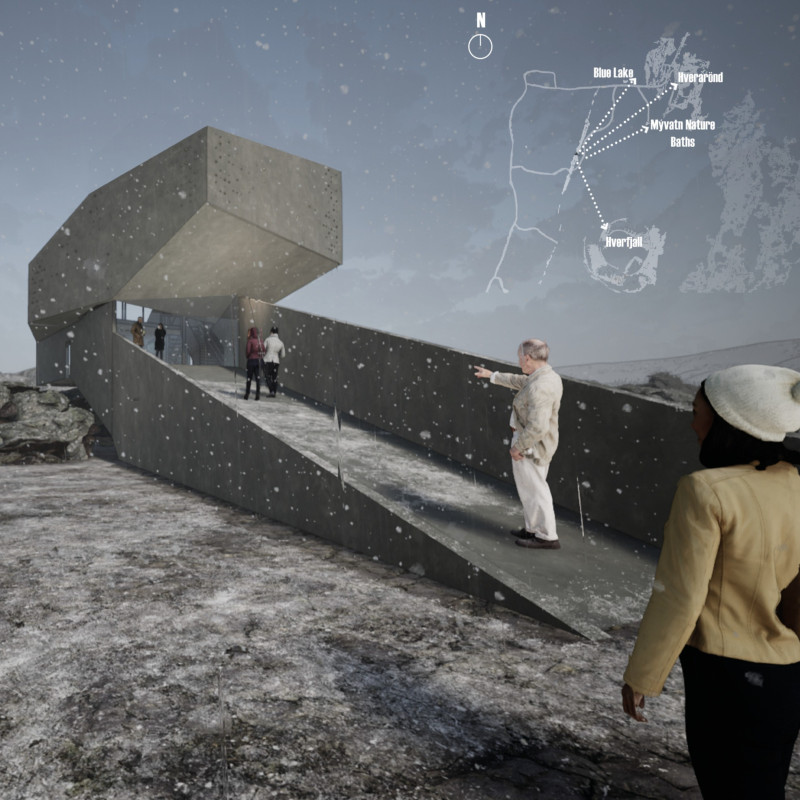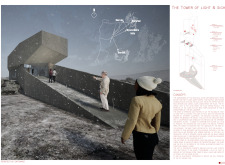5 key facts about this project
The design focused on the Grjotagja caves is located in a dramatic landscape of volcanic formations, boiling mud, and the Blue Lake. It aims to serve as both a visitor center and an observation point. The concept is built on connecting the architecture to the natural environment, enhancing the experience for visitors while allowing them to engage meaningfully with the geological features of the area.
Form and Landscape Integration
The layout is characterized by a twisting shape that draws attention from various distances, establishing a presence within the landscape. This form complements the surrounding natural contours, creating a link between the building and the earth. It acts as a bridge, connecting crevices while highlighting the geological formations that define the area.
Functional Layout
Inside, the design focuses on practicality and visitation. There are spiral platforms that function as exhibition spaces, offering information about both local geology and cultural significance. Essential facilities, such as waiting areas, an information office, and a café, have been included to improve visitor comfort and navigation through the space. The layout is arranged to invite exploration and curiosity.
Material Usage and Sustainability
Concrete walls feature carbon proofing techniques that reduce material use by about 50%. This method results in thinner walls, which visually relate to the landscape. By placing importance on sustainability, the approach reflects an awareness of environmental issues and strives to lessen impact during construction.
Natural Light and Atmosphere
Natural light significantly influences the interior environment. Perforated surfaces allow light to filter in, creating changing patterns throughout the day. These effects resonate with the natural light found in nearby caves. Furthermore, movable stone tablets in the design enhance interaction with light. This design element leads to a lively atmosphere that encourages visitors to engage with the geological features and the space itself.





















































